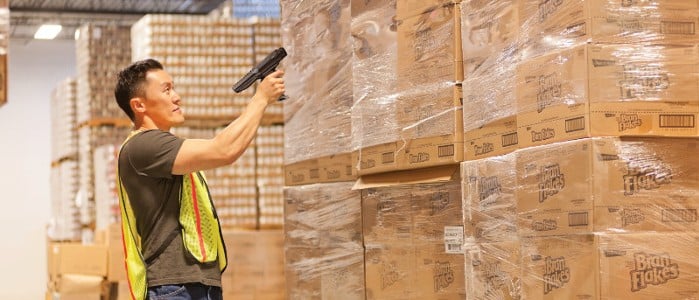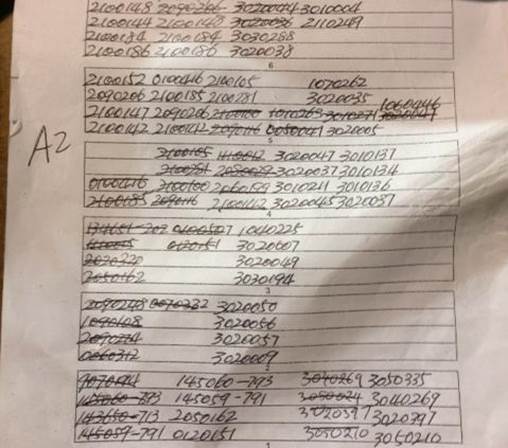
Inventory count is complete
So, you’ve done your annual inventory count and probably thinking you’ve survived another one. Write-offs weren’t so bad and the big bonus is that you ‘found’ extra inventory that you didn’t think you had.
But before you call this year’s count a wrap let’s take a moment to consider what your count is really telling you.
Discrepancies
No doubt you found some discrepancies but in the end, you may have ended up in the 90’s as far as inventory accuracy is concerned. I hate to burst your bubble, but most inventory accuracy numbers are actually ‘gamed’. This accuracy number is actually based on a lot of pre-work that went into prepping your facility for the count. Areas are blocked off, issues to production are cut-off, shipments are all done before the count, and all inbound materials received during the count are not processed. So, little wonder the count accuracy is so high. Also during the count did you take into account location accuracy? In other words, were the parts in the right location as well? Certainly, if you use one big location you’ll have very high location accuracy but who are we kidding? So, stop kidding yourself and ask this question – what is my true inventory accuracy? If you don’t have a real-time warehouse management system that uses bin locations, it is likely in the 80’s. Which means at any time close to 20% of your inventory is off and its true whereabouts is known to a few individuals. This also means 1 in 5 transactions involving physical handling of inventory can get delayed or not get completed because of inaccurate inventory. With this kind of accuracy level ask yourself what is inaccurate inventory really costing you? And that extra inventory you just found really means a customer order went unfilled or monies were wasted on excess inventory.

Obsolete inventory
It’s usually pretty easy to spot; the pallet is wrapped, sits on the top most rack level, is dusty, and has a big DO NOT COUNT label on it. The reason it’s still around is because it has book value and the financial covenants need it. It may also be around because an old customer may someday need it. A FSN or fast, slow and non-moving report will also allow you to quickly highlight this material. While it satisfies the financial side, it’s taking up valuable warehouse space and actually costing you as much as 30% per year in storage costs. This is the opportunity to consider a quarterly write-off program or better yet a systematic program to blow it out to a discounter or scrap processor – anything to prevent it from ending up in a landfill. It’s time to ask questions around how it became obsolete and what can we learn from this incident, so it doesn’t happen again. Monies tied up in obsolete inventory are the warehouse industry’s elephant in the room. They won’t disappear until you learn from them.
Power BI Reporting & AnalyticsPower BI could revolutionize your business by turning your ERP data into clear insights. Want to see Power BI in action? |
Negative Inventory
Prior to the count, find out how many products appeared as negative in your inventory report by location. Most manufacturers who have some sort of backflush or auto-issue of materials will experience negative inventories that should get washed out when the system catches up with what actually happened on the floor. For example, raw material for a specific job arrives and is immediately dispatched to the production area, yet the accounting of that product is not done until next day. In the meanwhile, it is quickly used up by that job and upon completion of the finished part, the system back flushes the raw materials out of that location thereby creating a negative inventory. Next day accounting receives the material into the system and this should zero out the negative. But sometimes that doesn’t happen because data entry keyed this raw material to another location in the warehouse, and not the auto-issue location. Now your job is to find out why this happened.
It’s also time to review about your general material handling practises.
Cycle Counts – This activity truly benefits the operations of the business. Create a cycle count program based on ABC categories, velocity, or value. Once you achieve 97% cycle count accuracy you have a case to eliminate the annual physical altogether.
Aged Inventory – Considering moving this product to a third-party facility, thus freeing up valuable space and capacity for materials you need every day.
FSN (Fast Slow Non-Moving) Report – Running this report monthly or at least quarterly will get you in the mindset of doing something proactive around aging inventory.
Think about what you saw during your count.
- Excess materials sitting around in production
- Too many partially filled locations, or as we call it “honeycombing”
- Deadheading or old product stored in locations that are very difficult to access
- Racking - What kind of shape is it in?
- Material handling equipment - When the last time was this equipment was serviced and/or replaced?
See your warehouse from a different perspective and you will be surprised by what you find.
Take the view that the annual inventory count is both a necessary chore and an opportunity to improve your warehouse. Every count is a story being told about your warehouse operations – listen, learn, and act.
For more blog posts on effective warehouse and inventory management visit our Warehouse and Supply Chain Blog
Visit our website http://www.portable-intelligence.com/ to learn about our company, products and services.







